Blood on the Stage, 480 B.C. to 1600 A.D.
Blood on the Stage, 480 B.C. to 1600 A.D.
Milestone Plays of Murder, Mystery, and Mayhem: An Annotated Repertoire
Amnon Kabatchnik
ROWMAN & LITTLEFIELD
Lanham Boulder New York Toronto Plymouth, UK
Published by Rowman & Littlefield
4501 Forbes Boulevard, Suite 200, Lanham, Maryland 20706
www.rowman.com
10 Thornbury Road, Plymouth PL6 7PP, United Kingdom
Copyright 2014 by Rowman & Littlefield
All rights reserved. No part of this book may be reproduced in any form or by any electronic or mechanical means, including information storage and retrieval systems, without written permission from the publisher, except by a reviewer who may quote passages in a review.
British Library Cataloguing in Publication Information Available
Library of Congress Cataloging-in-Publication Data
Kabatchnik, Amnon, 1929
Blood on the stage, 480 B .C. to 1600 A.D. : milestone plays of murder, mystery, and mayhem: an annotated repertoire / Amnon Kabatchnick.
pages cm
Includes bibliographical references and index.
ISBN 978-1-4422-3547-2 (cloth : alk. paper) ISBN 978-1-4422-3548-9 (ebook)
1. Detective and mystery playsHistory and criticism. 2. Detective and mystery playsStories, plots, etc. I. Title.
PN1952.K335 2014
809.2527dc23 2014001214
 The paper used in this publication meets the minimum requirements of American National Standard for Information SciencesPermanence of Paper for Printed Library Materials, ANSI/NISO Z39.48-1992. Printed in the United States of America.
The paper used in this publication meets the minimum requirements of American National Standard for Information SciencesPermanence of Paper for Printed Library Materials, ANSI/NISO Z39.48-1992. Printed in the United States of America.
To the memory of the theatre artists who opened a new chapter in my life:
Lois Bianchi, producer
Richard Bianchi, set designer
Leonardo Cimino, actor
Shimon Finkel, artistic director, Habimah National Theatre, Israel
Zvi Friedland, director, Habimah National Theatre, Israel
Sir Tyrone Guthrie
T. Edward Hambleton, Phoenix Theatre, New York
Oscar Hammerstein II
Diana James, publicist
Michael Clarke-Laurence, Boston University
Norman Leger, Barn Playhouse, New London, New Hampshire
Frank McMullen, Yale School of Drama
Lee Strasberg, Actors Studio
Constance Welch, Yale School of Drama
Contents
Acknowledgments
I would like to express my gratitude to the following friends and scholars who were extremely helpful in various ways and made this project possible.
Thanks to Marv Lachman, who, several decades ago, invited me to a series of literary parties at his Bronx apartment where he, Bob Aucott, Jon Breen, Lianne Carlin, Randy Cox, Patricia Erhardt, Allen J. Hubin, Francis Nevins Jr., Otto Penzler, Charles Shibuk, and Chris Steinbrunner suggested that I not only read and collect detective literature but also study its sources, history, and trends. These gifted ladies and gentlemen have since edited journals, penned books, and launched a wave of scholarship in the field. Their influence on the development of this resource book is highly appreciated.
I am greatly indebted to the late publisher Ted Dikty, who planted the seed of Blood on the Stage in my mind, and to the late professor Michael Roy Burgess (pseudonym, Robert Reginald) of California State University at San Bernardino for encouraging me to develop an annotated checklist of suspense plays into a book-length endeavor.
A special note of thanks to Bryan Reddick, academic dean of Elmira College, and professors Jerome Whalen and Leonard Criminale, who offered valuable suggestions regarding classic criminous plays.
In my pursuit of old, out-of-print manuscripts and yesteryears newspapers and magazines, I traveled to a number of near and far libraries. My gratitude goes in particular to the librarians of the Steele Memorial Library of Elmira, New York (notably Owen Frank); the Corning, New York, Public Library; the Olin and Uris libraries at Cornell University, Ithaca, New York; the New York Public Library, Stephen A. Schwarzman Building, Manhattan (particularly Paul Friedman); the New York Public Library of the Performing Arts at Lincoln Center, Manhattan (especially Rod Bladel, Christopher Frith, Christine Karatnytsky, Susan Kraft, Jeremy McGraw, Louise Martzinek, curator Karen Nickeson, and the three little witches of the photocopy room). Thanks also to Howard Prouty, acquisition archivist at the Center for Motion Picture Study, Beverly Hills, California; Shimon Lev-Ari, director of the Israeli Documentation Center for the Performing Arts in Tel Aviv, Israel; and Yehudah Efroni, veteran actor with the Habimah National Theatre, also in Tel Aviv.
My appreciation goes to past and present staffers of the national office of the Mystery Writers of America in New York City; Eleanor Bader of Brooklyn; Alexa Kelly, Brian Richardson, Andrew Charity, Alvin and Myra Chanin of Manhattan; George Koch of Queens; Michele Slung of Woodstock, New York; Nancy McCaig of Corning, New York; Lindsay Bajo of San Diego, California; Helga Schier and Chayce Solchaga of Santa Monica, California; Lauren Holingsworth of Culver City, California; Bill Waters of Burbank, California; Maryglenn McCombs, publicist, Nashville, Tennessee; and Regina Miller of the Geffen Playhouse, Westwood, California.
Finally, salutation to Peter E. Blau of Washington, D.C., and Andrew Joffe of New York City for their input on Sherlock Holmes and the collecting of Sherlockiana.
Introduction
The stages of ancient Greece were awash with blood. Figuratively speaking, for the violent action occurred offstage. A messenger would arrive at a climactic moment and relate in stark, vivid images how Agamemnon was axed to bits by his wife, how Oedipus gouged out his own eyes, how Medea threw her sons from a rooftop, how Heracles was scorched to death by a poisonous robe, how the raging women of Thebes savagely lynched their king.
In Prometheus Bound (480 B.C., though some scholars ascribe a somewhat later date), the great tragedian Aeschylus introduced the first theatrical murderernone other than Zeus, king of Olympus, who, with his mighty weapon the thunderbolt, sent the titan Prometheus to Hades for having stolen fire from the gods and given it to man.
In 463 B.C., Aeschylus penned and produced The Danaid Tetralogy , the first known theatrical piece to portray a mass murder. It is a trilogy of tragedies, of which only one has survived the passage of time. The plot is based on the myth of the Danaids, the fifty daughters of Danaus who attempted to flee from Egypt to avoid incestuous marriage to their cousins, the fifty sons of Aegyptus. When their escape is foiled, Danaus and his daughters plot to murder the bridegrooms on their wedding night. They are then put to trial, the earliest courtroom drama on record. The goddess Aphrodite appears and restores peace in the cause of the sacred marriage of Heaven and Earth.
Aeschylus went on to dramatize the first staged domestic homicide: Oresteia (458 B.C.) begins with Queen Clytemnestra of Argos awaiting the return of her husband, Agamemnon, from the Trojan War. She is in mourning, for Agamemnon has sacrificed their daughter. Her sorrow is compounded by jealously when Agamemnon brings with him a captive concubine, Cassandra. Moments after the triumphant monarch enters the palace, the chorus of town eldersand the audiencehears agonized screams. When the doors are thrown open, Clytemnestra stands next to the butchered bodies of Agamemnon and Cassandra, brandishing a bloody ax.
Crime begets crime. Oresteia continues with a succession of murders as Agamemnons son, Orestes, and daughter, Electra, guided by divine avengers, the Furies, proceed to kill Clytemnestra and her paramour, Aegisthus. In a picturesque trial scene, Orestes is accused of murder, facing ten juror-judges who take up their positions between the audience and the actors and produce a not guilty verdict.
Next page
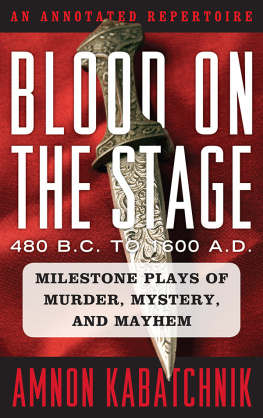

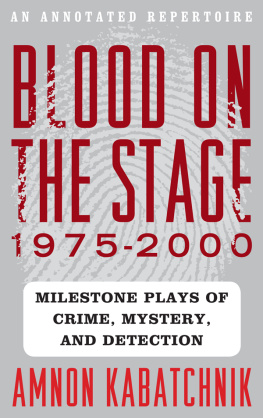
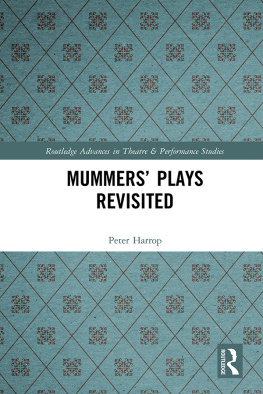

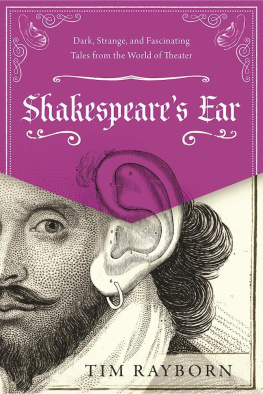
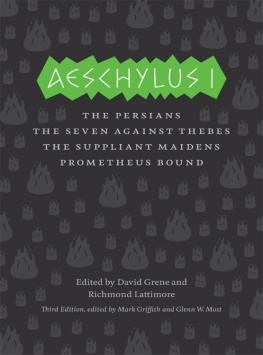



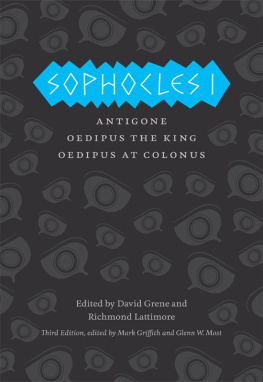

 The paper used in this publication meets the minimum requirements of American National Standard for Information SciencesPermanence of Paper for Printed Library Materials, ANSI/NISO Z39.48-1992. Printed in the United States of America.
The paper used in this publication meets the minimum requirements of American National Standard for Information SciencesPermanence of Paper for Printed Library Materials, ANSI/NISO Z39.48-1992. Printed in the United States of America.